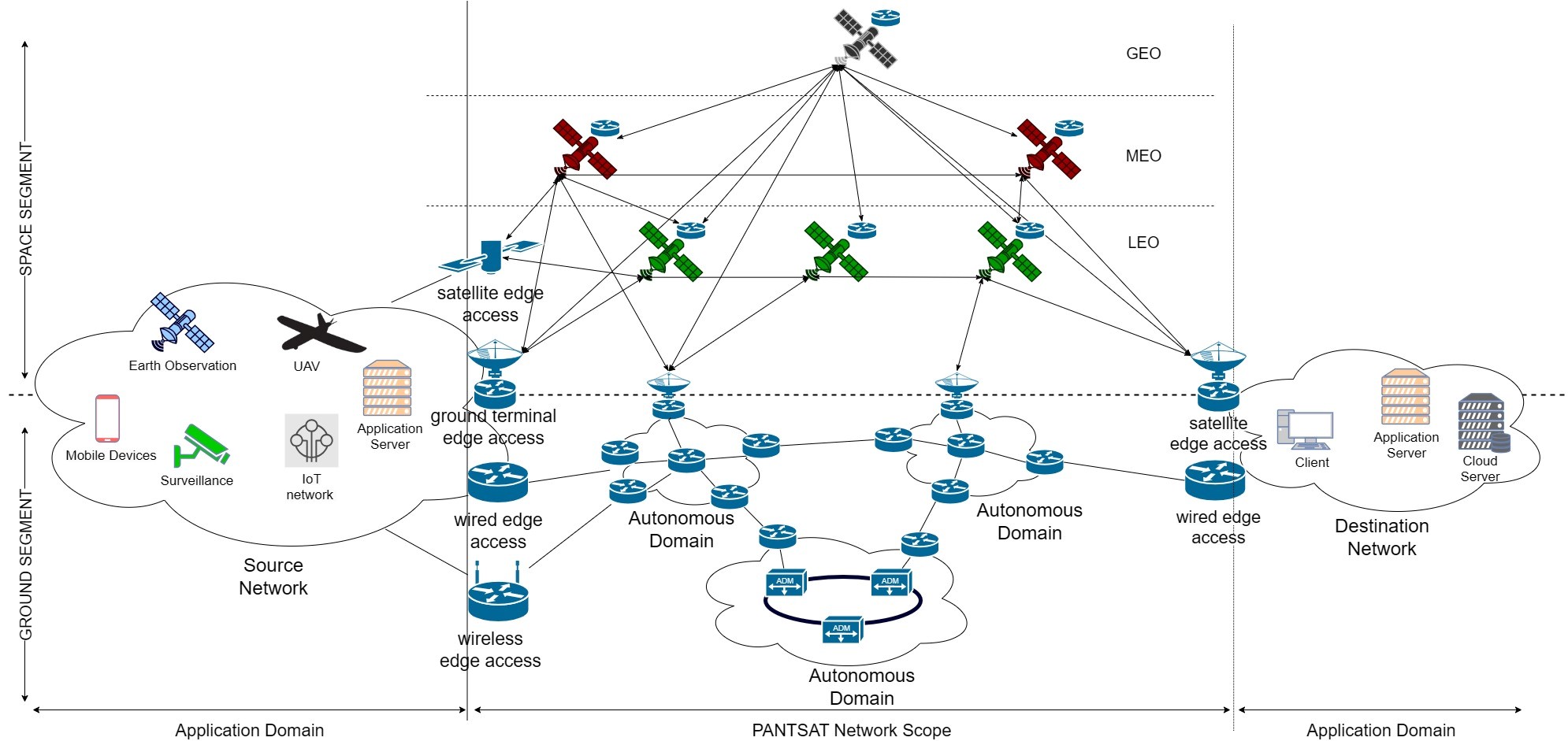
-
StatusOngoing
-
Status date2025-07-31
-
Activity Code3A.157
To develop and test Path Aware Networking (PAN) techniques for low Earth orbit (LEO), medium Earth orbit (MEO) or geostationary orbit (GEO) systems with dynamic bandwidth allocation and oversubscription and for hybrid satellite-terrestrial networks, with multiple network paths.
Study and implement new technologies to transform satellite constellations into space network infrastructures, seamlessly and transparently connected to terrestrial networks.
Accelerate the growth of space technology to implement space networks, integrating them with the terrestrial network, in which each satellite payload will be a network node with high digitalization and autonomy.
- High level of digitalisation on-board satellite.
- Improving configurability and decision autonomy on-board satellite in constellation.
- Develop technologies to improve connectivity between satellites and between space and ground, to implement the ability to also manage packet traffic and its routing.
- Improving on-board safety in traffic management.
- Adapting and integrating Path Awareness Networking technology into space networks.
In terrestrial networks, Path Aware Networking (PAN) is an emerging networking concept designed to address the unpredictable issues of modern networks regarding bandwidth availability, transmission latency, reliability and security.
PAN could present significant advantages for space networks connected in transparent and seamless way to terrestrial networks (see diagram below) overpassing the current constraints in implementing the packet traffic in the space segment, improving also the capability to implement encrypted traffic flows such as with IPSec based VPNs.

- Connection beyond Earth: Multi-orbit satellite constellations can extend internet access beyond terrestrial limits, forming a Satellite-PAN (S-PAN) that enhances global coverage and connectivity.
- Constant connectivity: Satellites positioned with clear views of the sky ensure reliable connectivity worldwide. They function as dependable intermediate nodes that remain operational during terrestrial disasters such as storms or earthquakes.
- Improved navigation: A global PAN would allow users not only to set destinations but also to select optimal routes, akin to how travellers assess traffic conditions, ultimately enhancing navigation efficiency.
- Traffic awareness and path Selection: Users could evaluate traffic conditions across the global network, enabling them to opt for less congested routes. The ability to choose paths increases flexibility and improves communication efficacy.
- Packet ubiquity and reliability: Through multipath and multicast capabilities, PAN allows multiple copies of packets to traverse different routes simultaneously. This enhances the likelihood of successful delivery, especially beneficial for streaming services and real-time data transmission.
- Source verification: With a PAN, destinations can verify if incoming packets travelled through secure paths, reducing risks such as spoofing while ensuring data integrity.
- Enhanced security: Satellites are advantageous for long-distance communication, due to the fewer hops involved in a transmission path. With consistent security measures in place, a direct connection between two continents via one or two satellites can be safer than relying on multiple terrestrial nodes.
The project duration is 24 months. T0 began at the end of 2023.
Close to finish at end of 2025.





